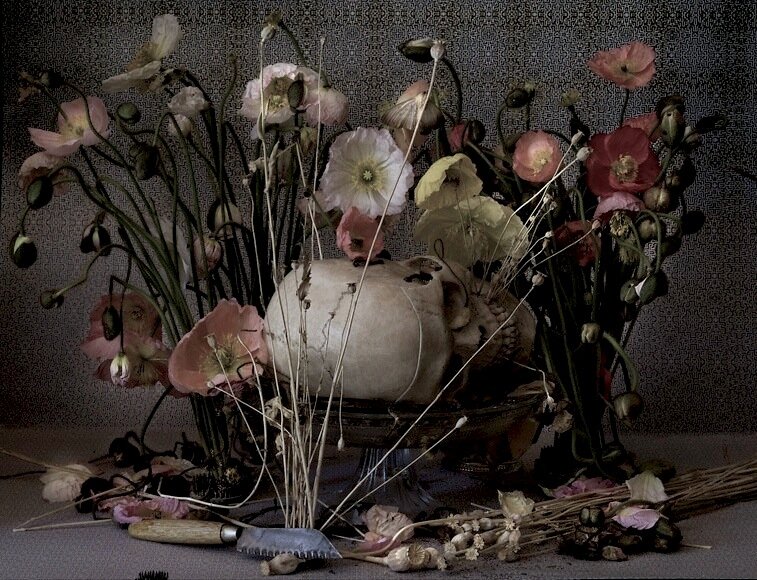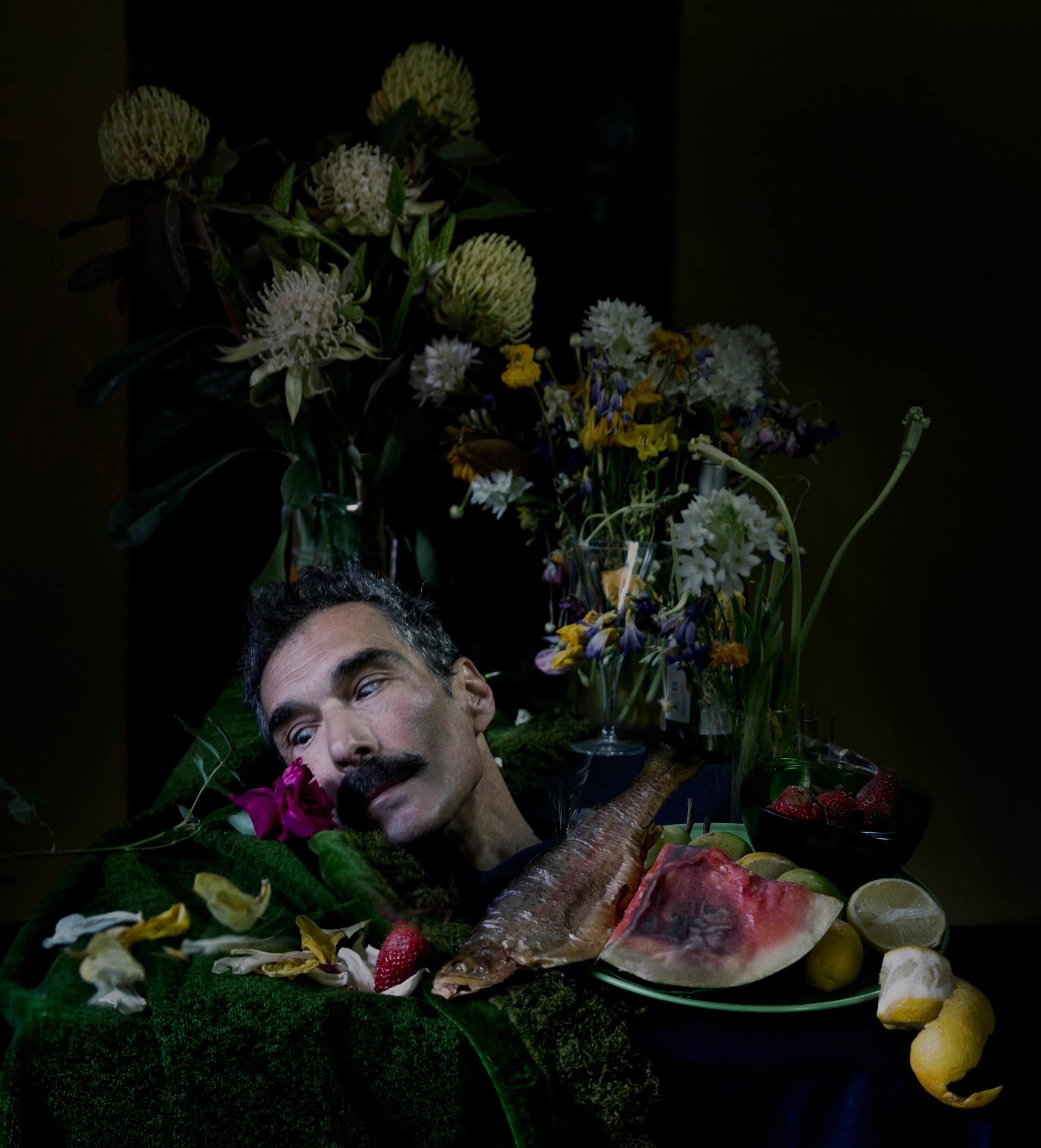Drinks with the Artists
Anthony Scibelli. Photographer, framer, poet and vintage motorbike lover.
How an acclaimed artist who forayed in the experimental 70’s New York scene comes to live on a bushland estate near Daylesford, Victoria. The story involves a contessa, some (most likely) banned substances, a cabana in Positano and an open mind.
Greet Anthony Scibelli. The artist who is best known for his native Australian vanitas has an equally eclectic and colourful past.
The Basement of St Mark's Church, Club 57 by Harvey Wang c.1979
Growing up (in his 20’s, that is), in Brooklyn in the late 1970’s was instrumental in shaping the artists’ attitude towards life, relationships and art. He became a part of Club 57, an underground space given to a bunch of “like-minded” visual and performing artists by the owner of the building, St Mark’s Church. The club espoused the punk-osophy, dada-esque culture where anything and anyone was part of the vaudeville style production. According to Scibelli, it was “actually, I don’t remember much”. Fortunately, the negatives from his camera recall the times spent there and will feature in an exhibition at none other that New York’s art mecca, MOMA in June of 2017.
Basquait with Haring c. 1980
Keith Haring, Madonna, a host of rock bands, performance artists and Basquait were known to have frequented the basement to perform and to watch.
The club shut down in 1983. By this time, Scibelli was in Rome, chasing his then wife around the town to parties where he bumped into a contessa who took a shining to the pair. A few months later, the lovely contessa allowed Scibelli and his wife to live in her cabana on a private beach in Positano. Here he became an artist in a new, slightly more salubrious light. However, how long can man live on what seemed to be an island? The relationship fell and Scibelli moved back to NY where he took a role photographing experimental building methods that an Australian was engineering. Through this connection, Scibelli met his new wife and soon enough, moved to the inner suburbs of Melbourne.
Never one to be idle, Scibelli wanted to create a home that involved the teachings of the experimental builder he worked with in the US, Michael Reynolds. And that is how he landed in Wheatsheaf-a few kilometres from the art-centric Daylesford.
Scibelli and Max March of the Alpha Males
Wheatsheaf estate is a sanctuary for Scibelli and his big dog, Max. Here he can meditate in the “romance light” that bursts into the floor to ceiling windows and warms the part-mud brick walls. Scibelli has created some of his best work whilst musing away at Wheatsheaf estate. The flora and fauna are major components of his carefully constructed photographic works. It is hard to think that he “doesn’t create work intentionally” as the compositions of native flowers and (taxidermic) animals convey meaningful consideration. The works also pay homage to the Dutch Masters and to the Japanese artform of Ikebana. These are clearly referenced. The light and shading of the Dutch Masters are a dead giveaway but there is a modern layer given to them as well, which hints at the formal, zen-like Ikebana arrangements. In his own words:
Deflowered began as photographic edition of 66 photographs that were made in the Wombat State Forest, Victoria Australia. A Wikipedia entry for The Wombat State Forest lists it as a Ruined Forest. And in some sections remains a no-mans land of gold mining and illegal timber cutting.
Endowed with flora and fauna, the artist uses wildflowers he finds around his studio. Species are identified, introduced to somewhat fecund studio and photographed.
Exotic species are inexpertly planted in makeshift beds and pots by the artist and then left to their own fates, generally photographic also. A shadowy alchemy unfolds as specimens are brought into the photo set, where things gradually evolve in the spectral light of his studio. Anthony Scibelli, 2016.
One of the great things about Scibelli is that he is not precious about his art of life. He exudes an edgy and excitable bohemia and is generous with his time and self. Where some artists believe they are sacred, Scibelli believes it’s the things around him which should be revered. And where some artists think the goal is to have your art in a fancy galleries, I can imagine Scibelli’s work applied in so many alternative ways that befit such an intriguing artist. They deserve to be seen by a wide audience, not just on a solitary wall.
His work has been exhibited in New York City and Melbourne. Albany and Bridge Hampton New York, Santa Fe New Mexico, Rome and Positano Italy. This work was on view in Daylesford at Bokeh Gallery in Howe Street. Galleries in Robe, Kyneton, Trentham and Port Fairy have also exhibited selections of this work.
Go here to purchase his work





